Tuzigoot National Monument is an ancient pueblo complex perched on a hilltop overlooking the lush green Verde River valley right outside of Clarkdale, AZ. The site and the Visitor Center offers a fascinating glimpse into the rich Tuzigoot National Monument history and culture of the Native American Sinagua people and how they lived more than 1,000 years ago. Note the name, Tuzigoot, is an Apache word (tú digiz) that means “crooked water”, referring to the nearby Verde River.
This is the Sinagua civilization who also built the communities at the Montezuma Castle and Well National Monuments, along with the pueblos at the Wupatki National Monument.
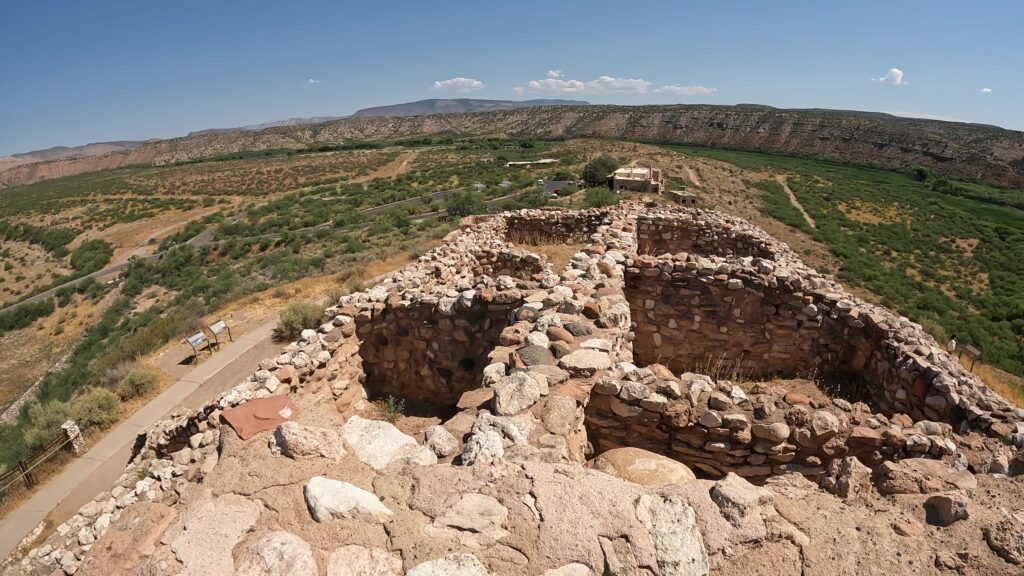
What is the Tuzigoot National Monument?
The Tuzigoot National Monument is a hilltop 110-room-plus multi-story pueblo complex and archaeological site situated on a hilltop overlooking the Verde River Valley. Tuzigoot showcases the remnants of the ancient village, providing visitors with a unique opportunity to explore and learn about the Sinagua culture and the people’s lives over a thousand years ago. The National Park Service administers the Tuzigoot pueblo and archeological site.
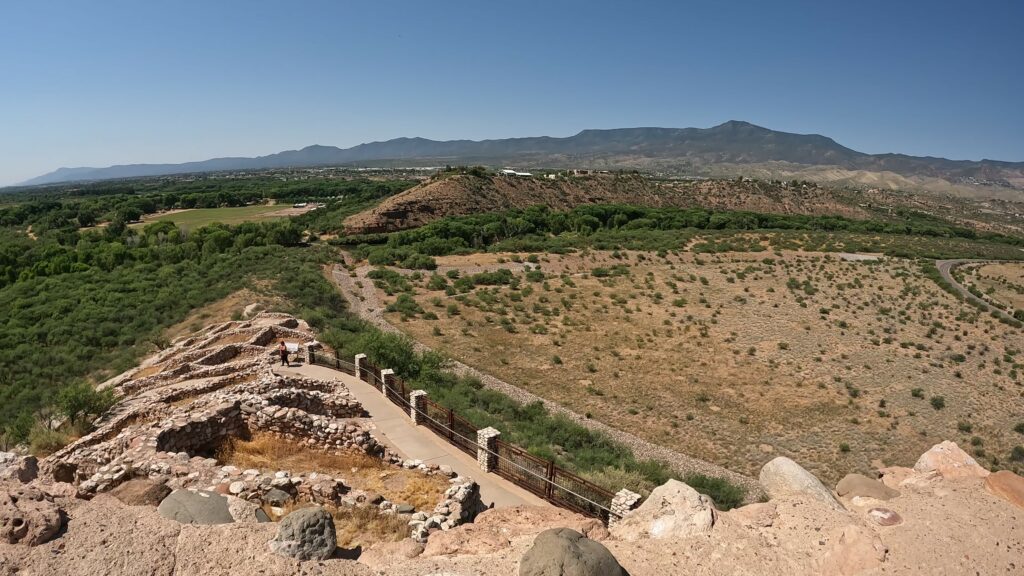
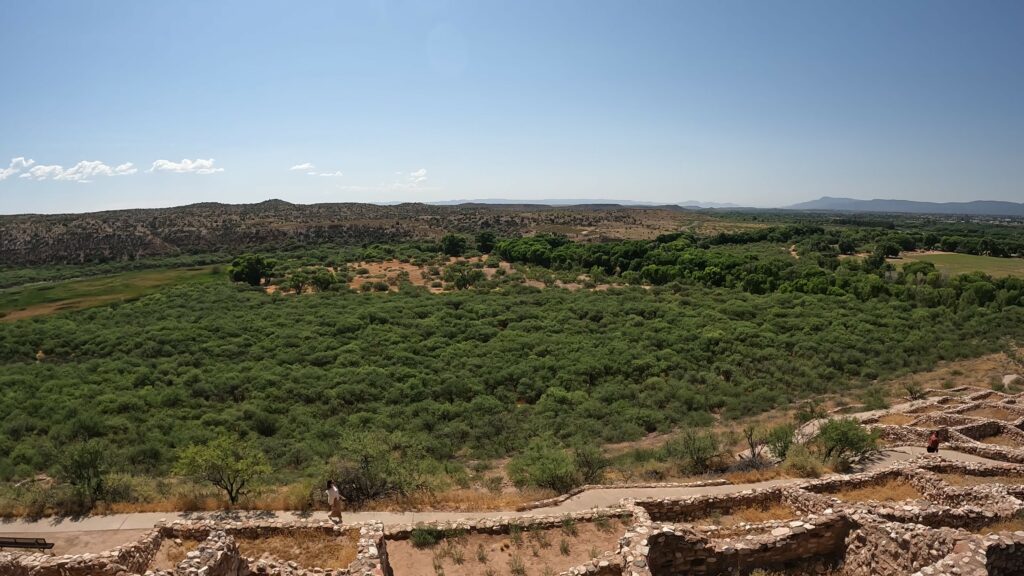
The SInagua People
Tuzigoot’s story begins with the Sinagua people, whose name translates to “without water”, in the Spanish language. Despite the arid landscape, these resourceful individuals thrived in the region by skillfully managing the available water sources. They traveled among trade routes as part of a vast trade network to other indigenous settlements along the Mogollon rim.
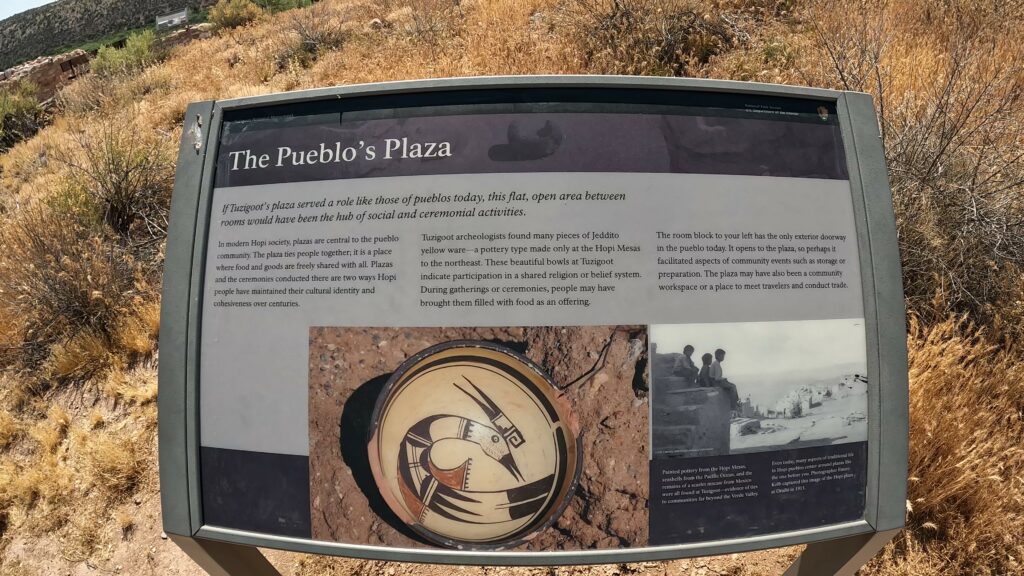
Construction of Tuzigoot
They constructed these Sinagua pueblo ruins at Tuzigoot around 1000 AD or at least the initial parts of it, and established a thriving community that lasted for several centuries. This location is a premium as you see the Verde River floodplain right adjacent to the hill and pueblo complex.
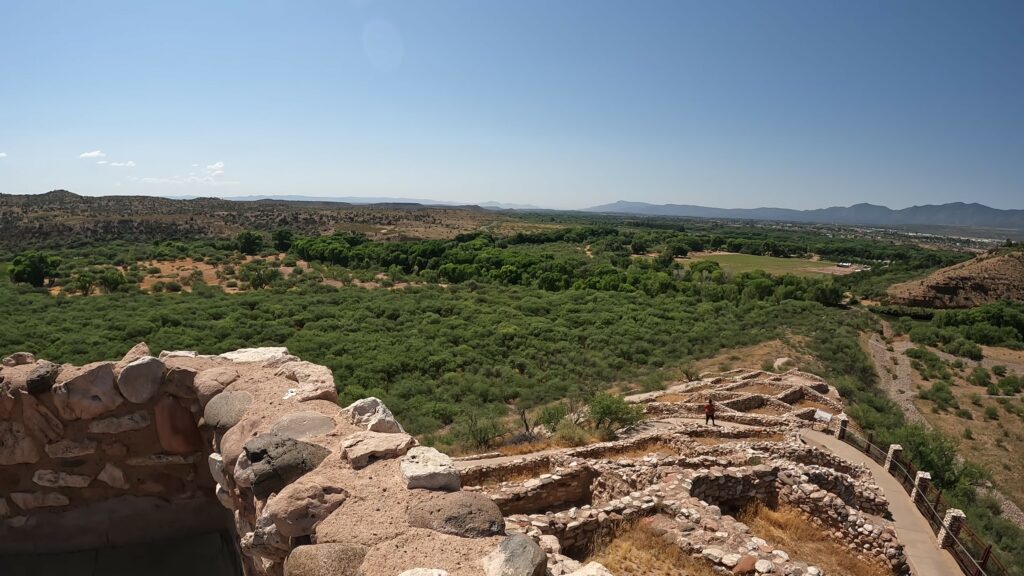
The Sinagua-built pueblos do not have exterior doors. They more often had holes in the ceiling where they would use a ladder to get in and out of the pueblo.
Tuzigoot stands as a testament to the architectural ingenuity of the Sinagua people. The multi-story pueblo features over 110 rooms that interconnect to form a complex network of living spaces. An extensive set of ground floor rooms exists with up to two levels built above. Visitors can observe the various rooms, kivas, and courtyards, marveling at the intricate layout that reflects the social dynamics of this ancient culture. See the Tuzigoot National Monument history come alive as you walk through the ruins and the Visitor Center’s exhibits.
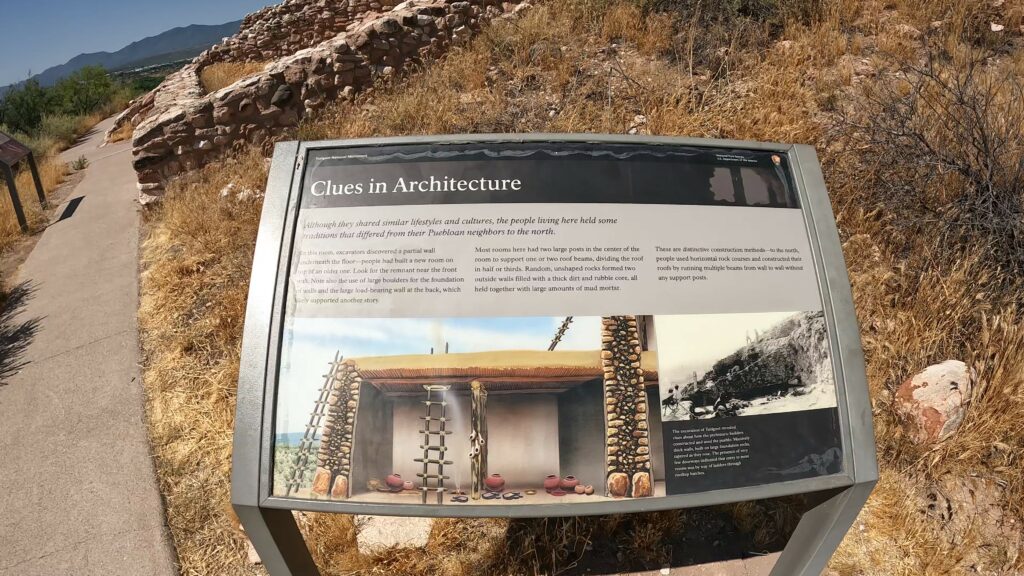
The construction of Tuzigoot involved the combination of stone, mortar, and mud plaster. The talented Sinagua builders used these materials to create sturdy walls, so some of them are still standing today. The clever design of the Pueblo ensures its stability with thick walls providing insulation and protection against the elements.
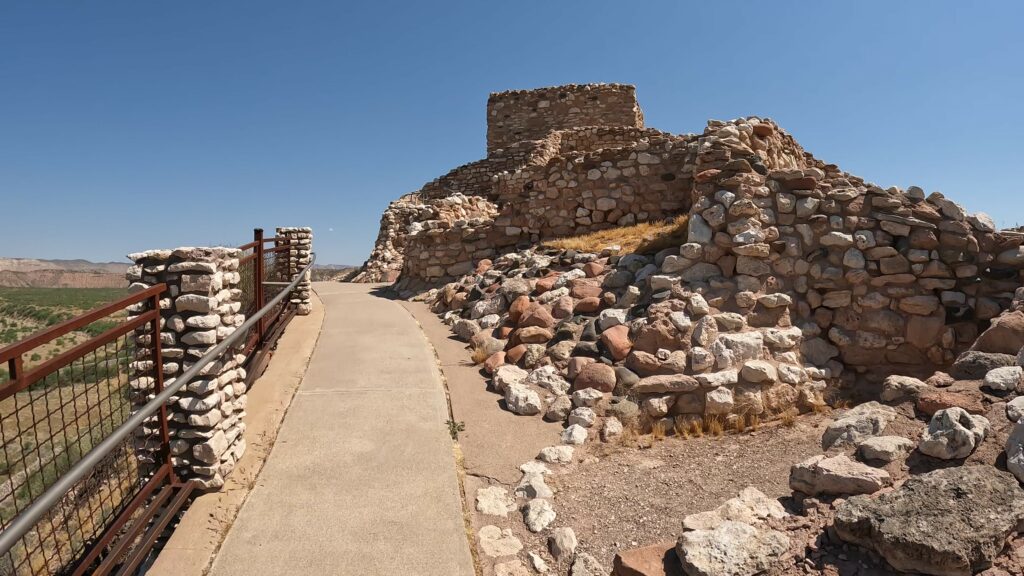
Abandonment
As time passed, the Sinagua people gradually abandoned the Tuzigoot site for unknown reasons still debated by experts. It’s believed that a combination of factors, including social, economic, and environmental or climate changes, played a role in their departure. The Pueblo complex was eventually left abandoned and became a silent witness to a bygone era.
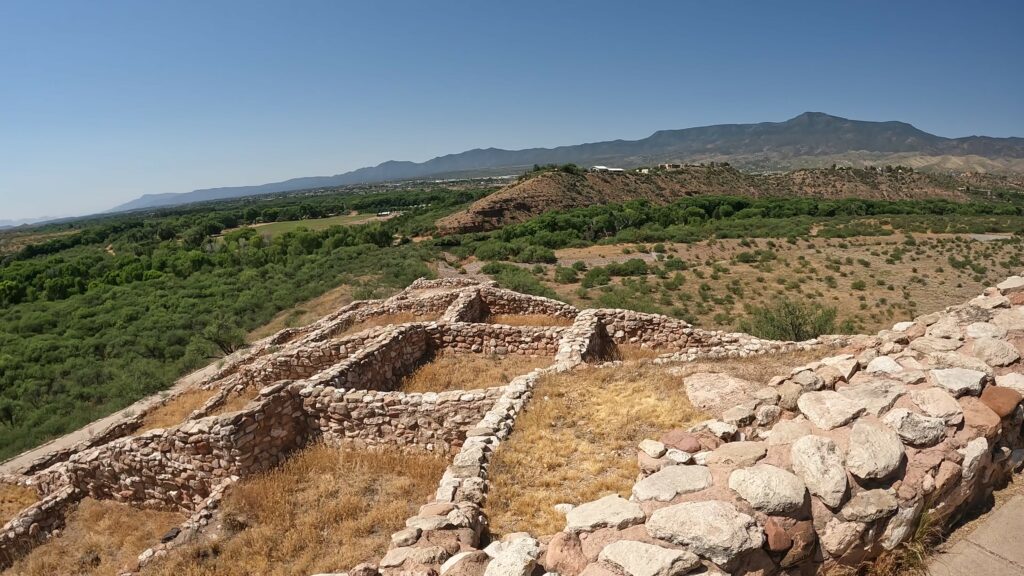
Reconstruction
Tuzigoot remained concealed in the earth until the 1930s when it was rediscovered during an archaeological survey funded by the civilian conservation corps. Since then, it has been meticulously studied and preserved, providing visitors with a glimpse into the past. There are a collection of artifacts that are on display in the Visitor Center.
Edward H. Spicer and Louis Caywood were hired under the Federal Emergency Relief Administration (CWA), later known as the WPA. They organized the project with Edward as the dig’s supervisor and Louis in charge of the lab. Harry Getty later joined to help supervise the project. The project and partial reconstruction of the site was completed in 10 months, paving the way for the Tuzigoot National Monument.[23]
The observation tower in the pueblo ruins was constructed to enable visitors to get 360-degree views around the hill. Stairs were introduced for easier access to this tower. The observation deck gives a great view of the lush green Verde River valley.

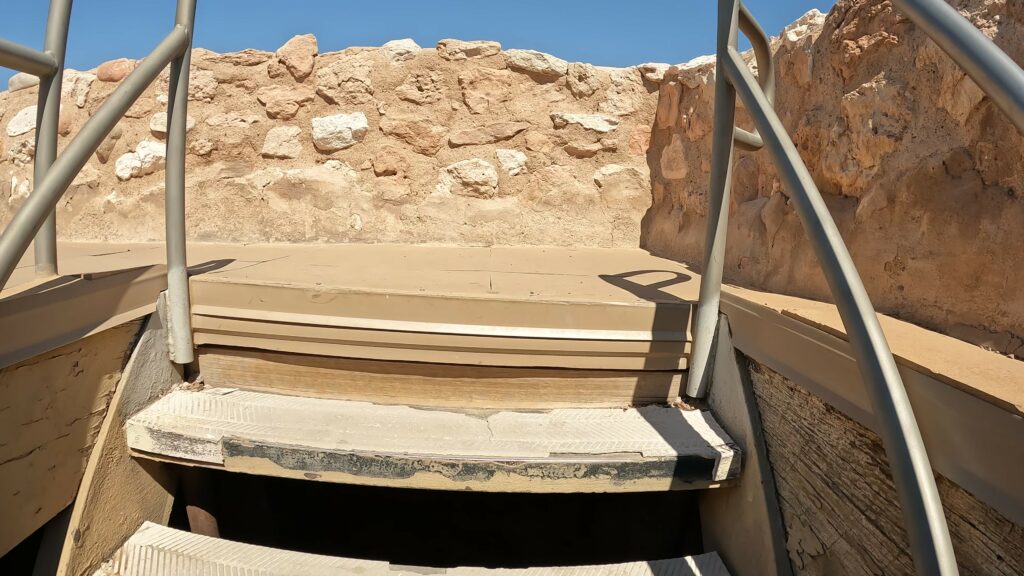
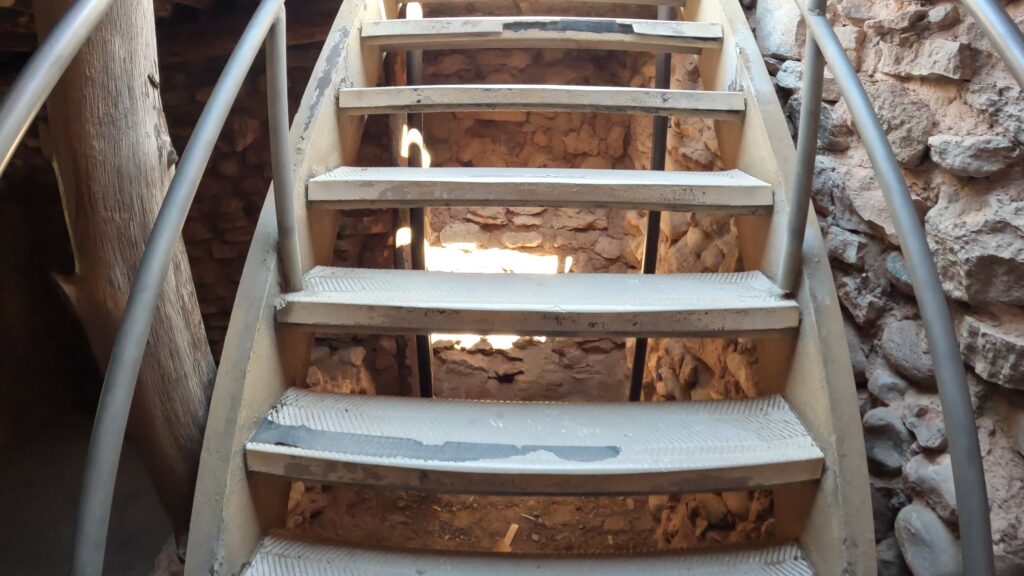
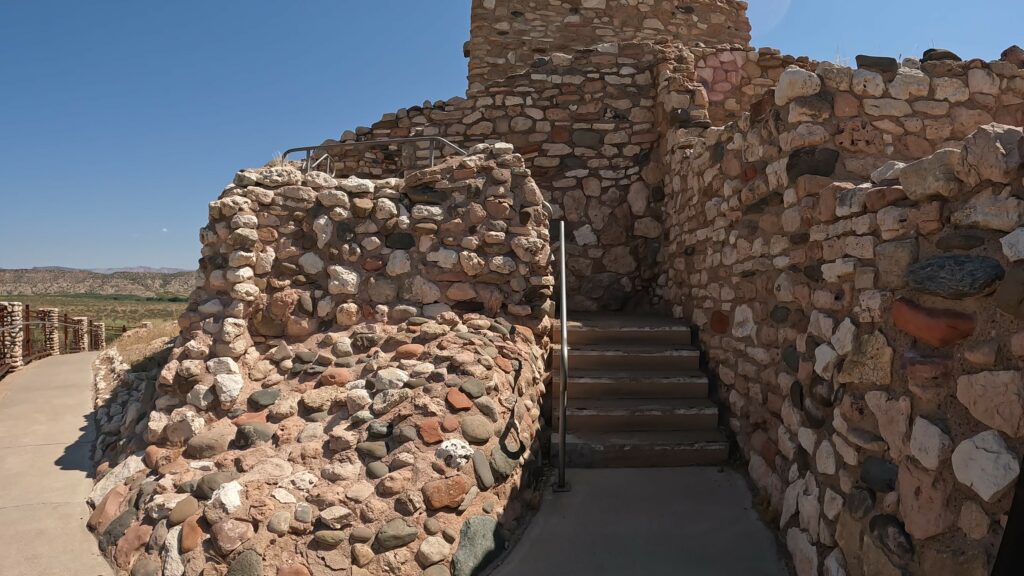
Note: The CCC was a federal government program designed to supply jobs for young men and to relieve families who had difficulty finding jobs during the Great Depression in the United States.
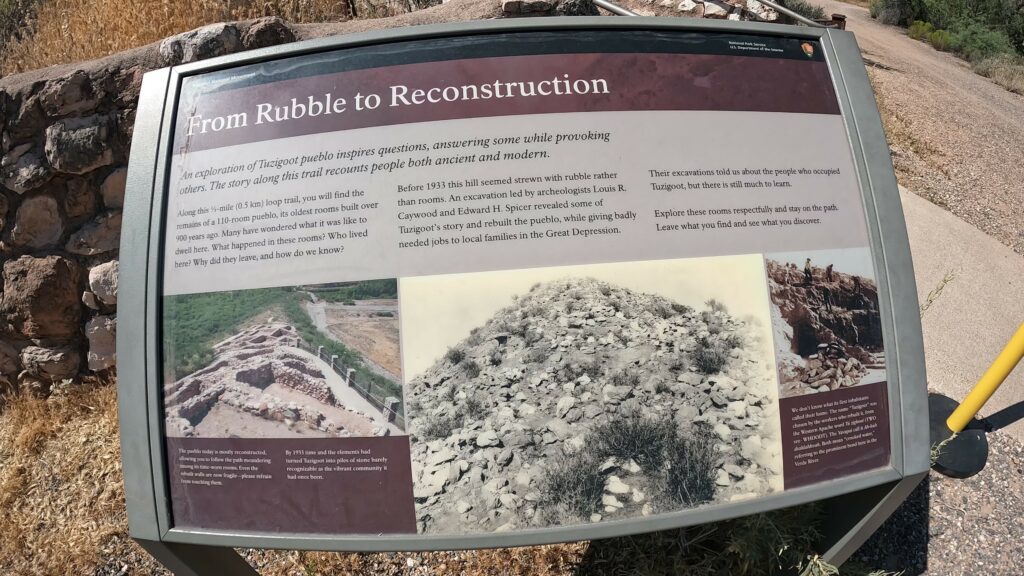
Historical Recognition
Franklin D. Roosevelt designated Tuzigoot Ruins as a U. S. National Monument on July 25, 1939. The Tuzigoot National Monument Archeological District was listed on the National Register of Historic Places on October 15, 1966.
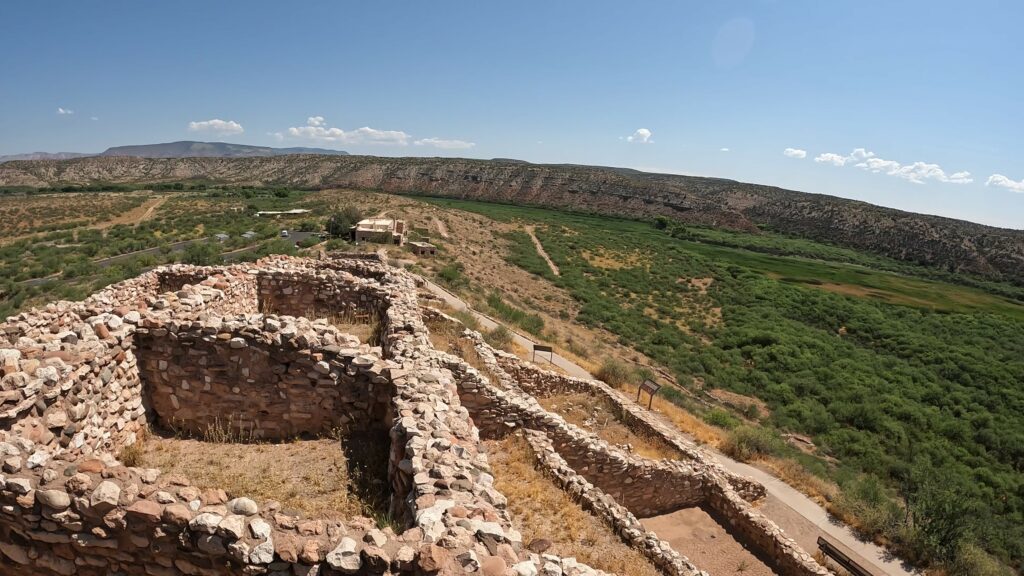
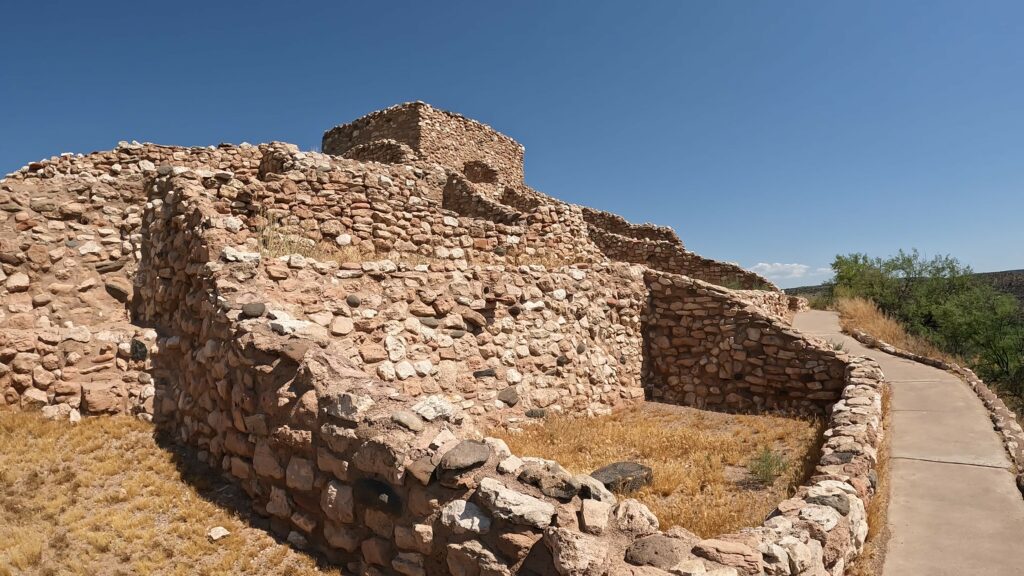
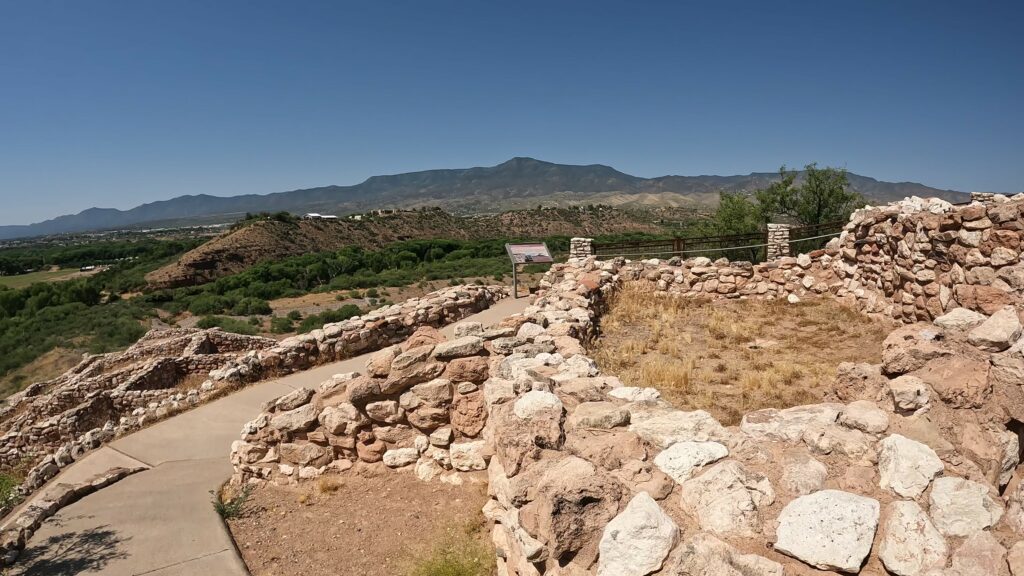
Visitor Center
The Tuzigoot Visitor Center provides many exhibits of artifacts on public display and other interpretive information to help visitors gain an understanding of the ancient Sinagua civilization. The Tuzigoot National Monument history comes alive as you walk through the exhibits in the Visitor Center.
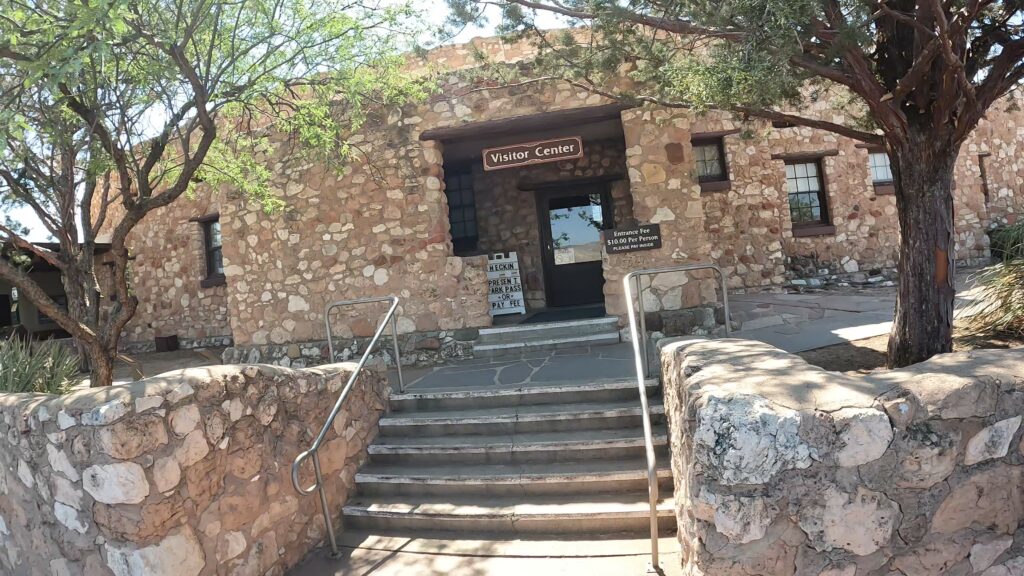
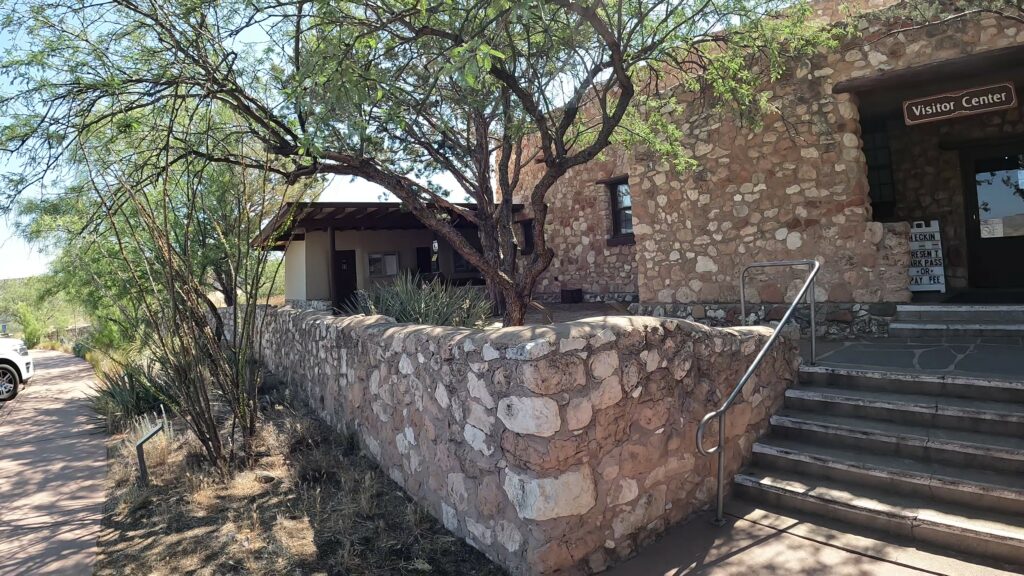
Exhibits
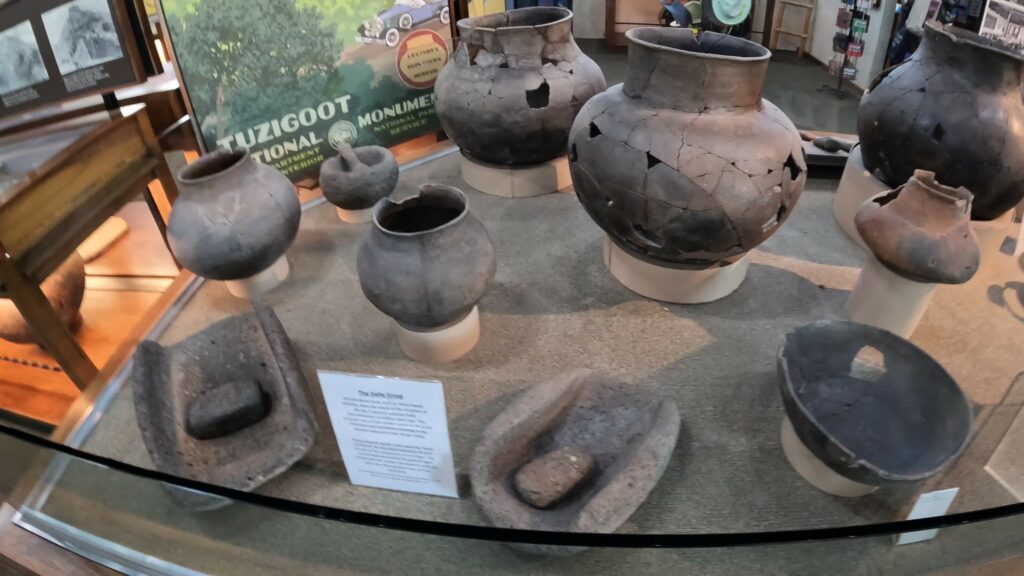
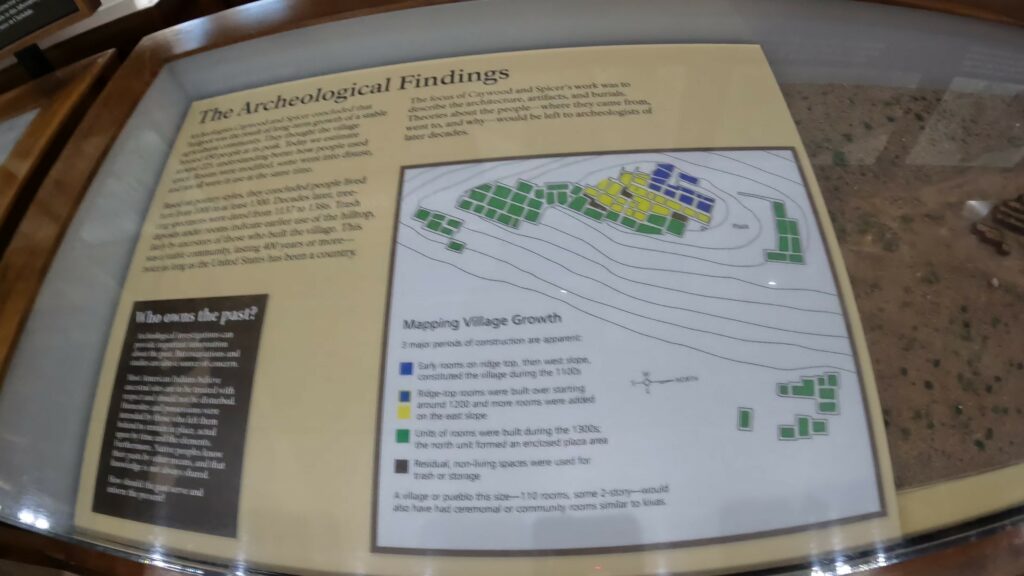
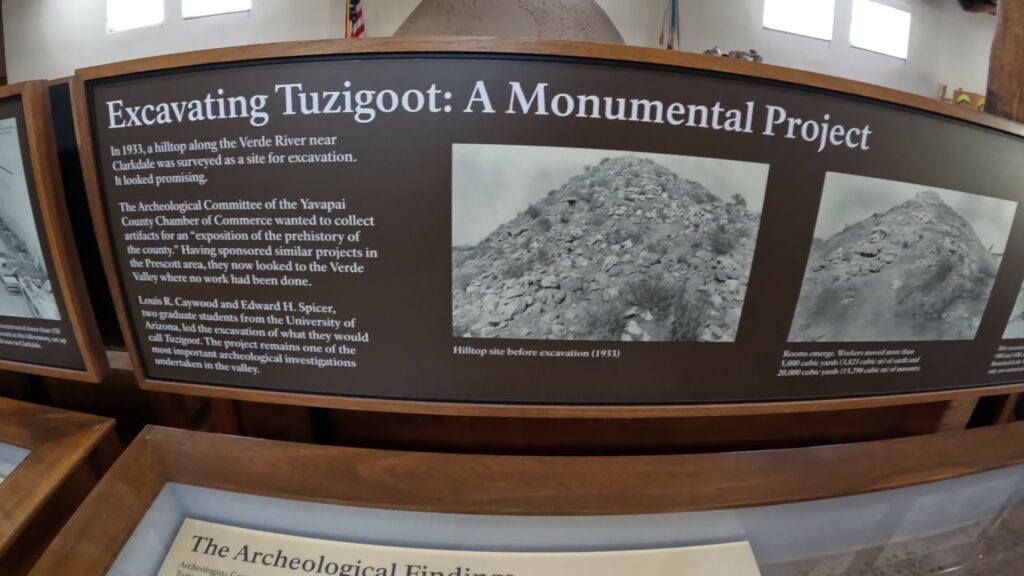
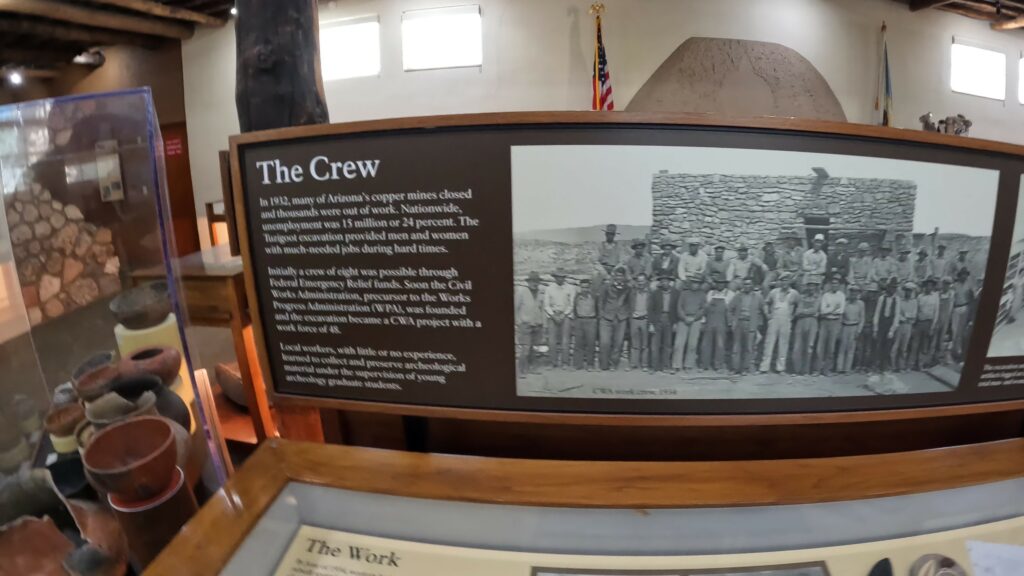
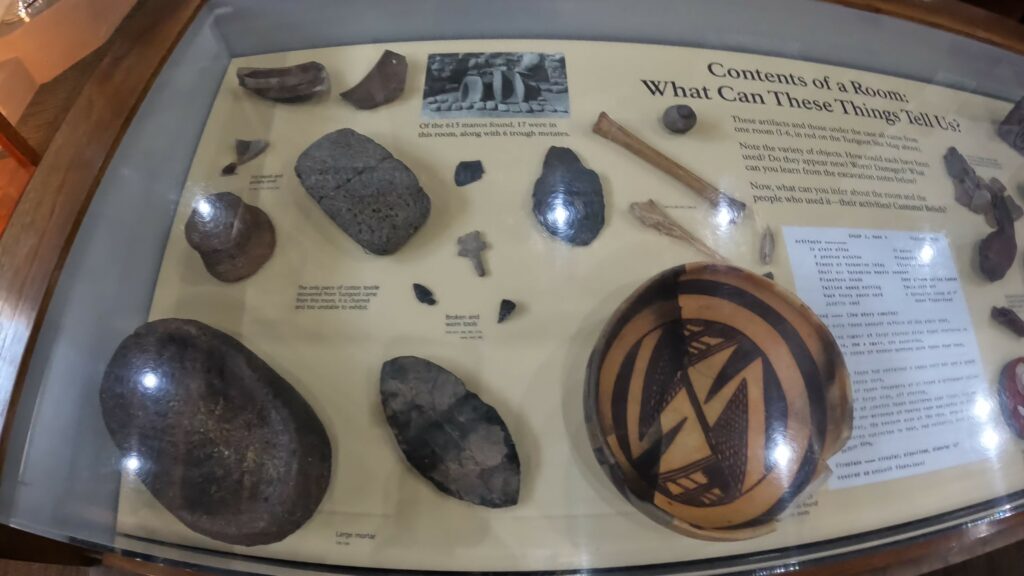
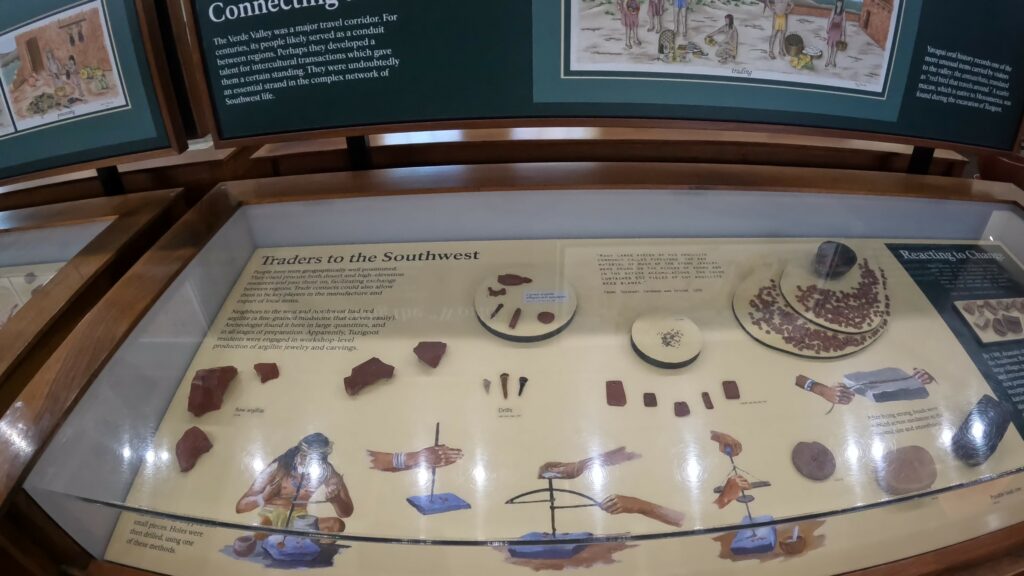
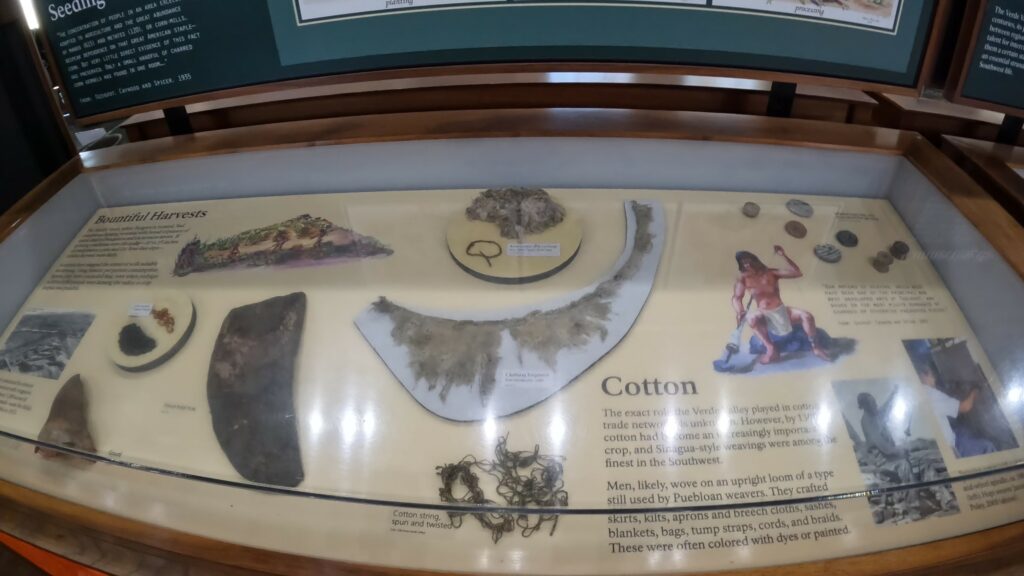
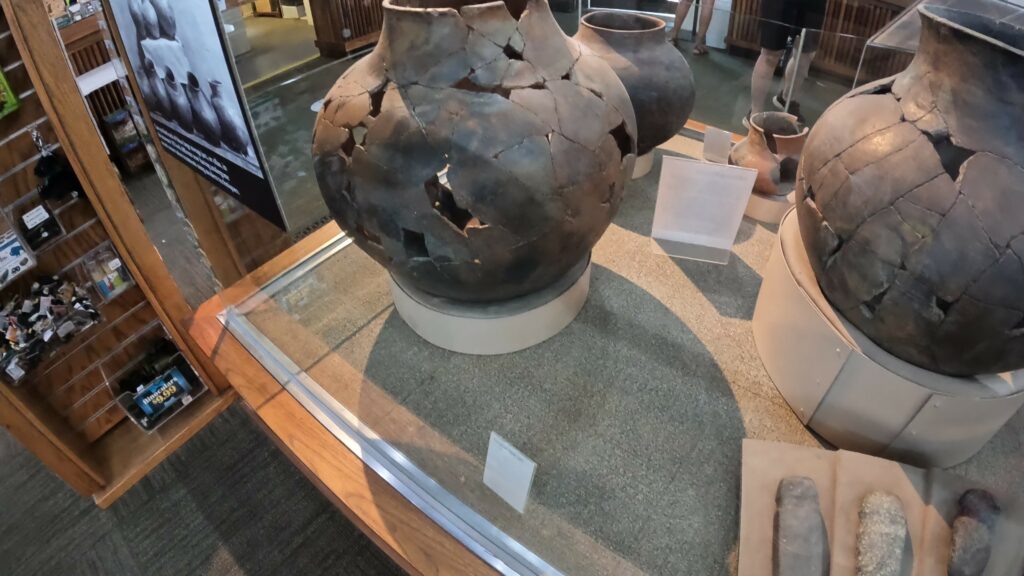
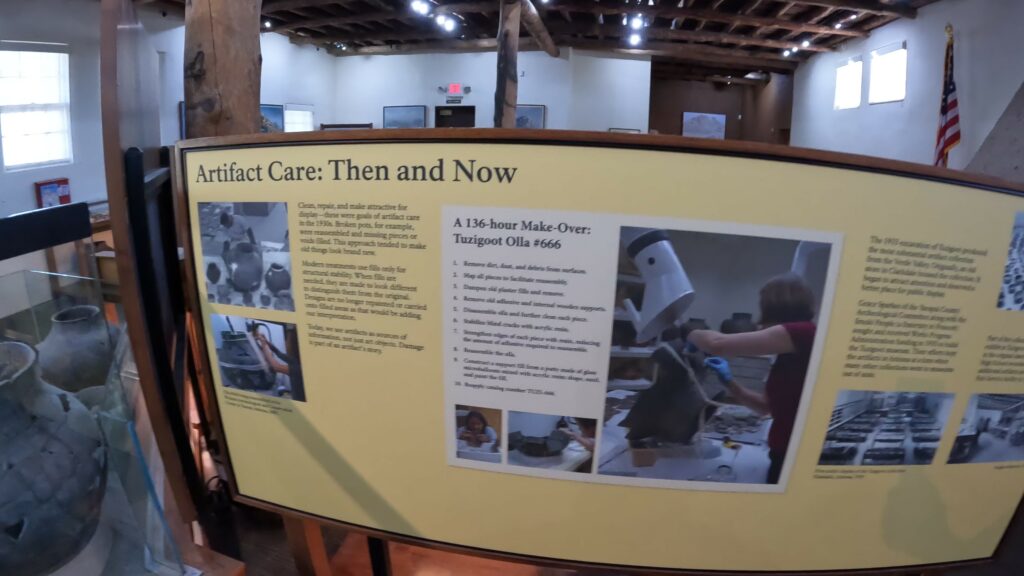
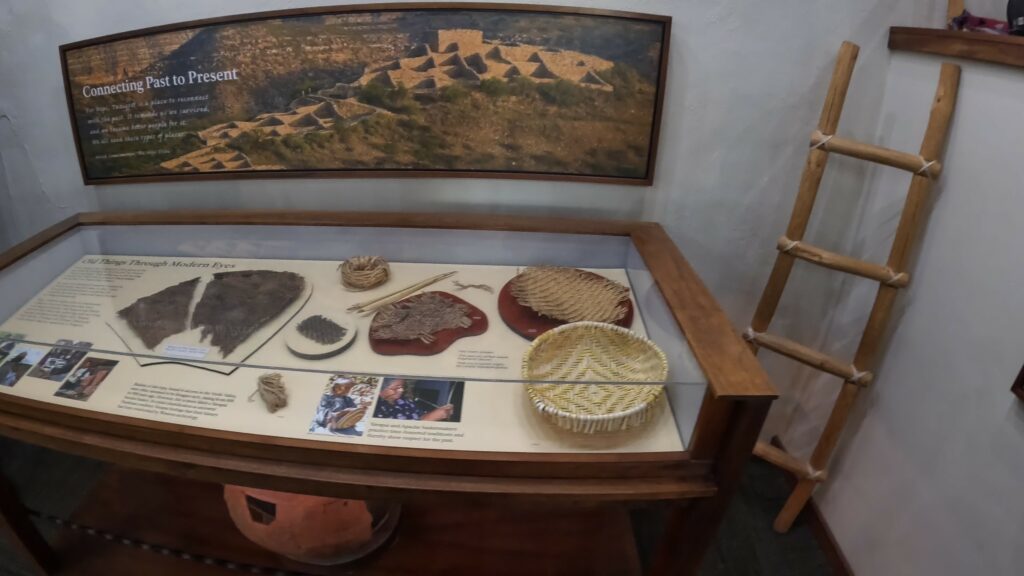
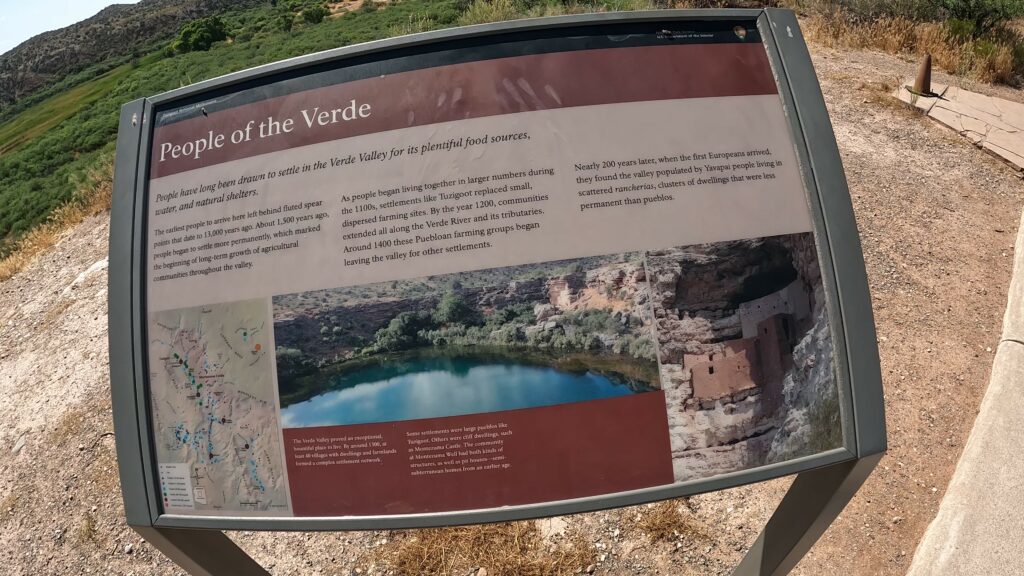
Where is the National Monument Located?
The Tuzigoot National Monument is located in central Arizona near Sedona, Cottonwood, and Clarkdale. To get to the National Monument, from I-17, you take exit 287 for Highway 260 West to Cottonwood. At the junction with 89A, turn left. Continue through the town of Cottonwood on 89A, and once you pass through Old Town Cottonwood, You will see a sign telling you where to turn for Tuzigoot Road as you’re nearly to Clarksdale, Clarkdale. Tuzigoot National Monument is located just a few minutes at the end of the Tuzigoot Rd.
What to Expect at the National Monument?
Now what to expect, you have a pretty light to moderate at least walk at this small national monument. There is some uphill walking and there are multiple sets of stairs that you have to climb to get to the Pueblo’s overlook. But, you get to walk amongst the ancient Pueblo structures and see everything in its existing state.
The entrance fee for an adult is $10 and allows access to the Montezuma Castle National Monument as well. They are open daily and have a good-sized parking lot.

The ruins loop trail in the park leads you up to the structure where the Pueblo ruins are. It also takes you along the Verde River to the edge of the Tavasci Marsh Overlook trail. The marsh overlook trail toward the Verde River was not open due to improvements. You can also explore the interpretive exhibits in the visitor center to get a little background information to better understand the history and culture of the Sinagua people, as well as the significance of the Tuzigoot In the region.

Conclusion
The Tuzigoot National Monument is a testament to the ingenuity and cultural heritage of the Native American communities who once called this land their home. By exploring the historical background, architecture, and significance of Tuzigoot, visitors can gain a deeper appreciation for the ancient Pueblo and the people who built it.
And look, if you like this content, you’ll want to check out all our other posts covering attractions near Cottonwood and Clarkdale, along with our stops throughout Arizona where we visit similar pueblos of indigenous communities in Arizona. This includes the Montezuma Castle National Monument and Montezuma Well National Monuments and the Fort Verde State Park. Also, check out the Verde Canyon Train Ride where the depot starting point is no further than a few miles away.
Also, you want to check out all our other videos covering the many fun and historical attractions on our epic Arizona trip. Do us a favor and subscribe. That way, you know when we get to put a new video out. Like that video and share it with your family and friends. Don’t forget to put a comment below if you’ve stopped here before.
FAQ
1. Can I climb or enter the Tuzigoot ruins?
No, visitors are not allowed to climb or enter the Tuzigoot ruins. The structures are delicate and preserving their integrity is of utmost importance. However, there are well-marked trails and viewpoints that provide excellent opportunities to explore and appreciate the site from a distance along the walkways. The exception is to climb inside the tower and up some stairs to the high point overlook.
2. Are guided tours available at Tuzigoot National Monument?
Yes, guided tours led by knowledgeable park rangers are available at Tuzigoot National Monument. These tours offer valuable insights into the history, architecture, and cultural significance of the pueblo. Check the visitor center or the official park website for tour schedules and availability.
3. Are there any amenities and facilities for visitors at Tuzigoot?
Yes, Tuzigoot National Monument provides visitor amenities to enhance your experience. The visitor center offers exhibits, informative displays, and a bookstore. There are restroom facilities and picnic areas available for visitors to relax and enjoy the surrounding landscape. Additionally, there are accessible pathways and parking spaces for individuals with disabilities.
4. How long does it take to explore Tuzigoot National Monument?
The time required to explore Tuzigoot National Monument can vary depending on your interests and the depth of exploration. On average, visitors spend about 1-2 hours exploring the ruins, exhibits, and trails. If you’re a history enthusiast or simply enjoy taking your time to soak in the details, you may find yourself spending even longer at Tuzigoot National Monument. The ancient pueblo ruins offer a fascinating glimpse into the lives of the Sinagua people who once inhabited the area.

Leave a Reply